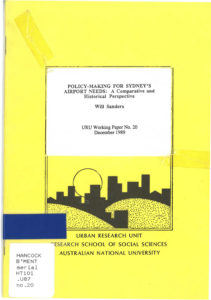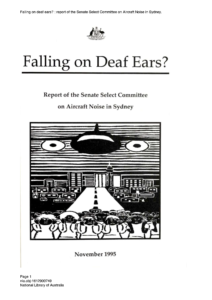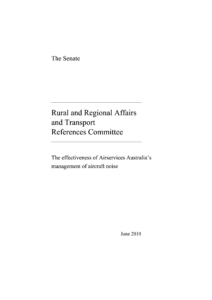60 Reasons to Protest: Reason #17 – Why we need a Royal Commission
BFPCA has been collecting and analysing countless government reports, scientific studies, discussion papers, policy proposals, Senate inquiries, and amendment bills, dating as far back as 1975 – yet: NOTHING HAS CHANGED.
We must thus demand a Royal Commission into the state capture by the aviation industry. It is Australia’s highest form of inquiry on matters of public importance.
Here is a selection of reports and inquiries that came before us. How much longer do we allow history to be just repeating itself. It is time we demand not just noise reductions but: justice!

02/1982 Aircraft noise survey of community reactions
… in areas with an exposure level of 20 NEF, almost half the residential population will be at least moderately affected, and 12% of residents will be seriously affected by aircraft noise. Considering what it means to be moderately or seriously affected, it does not seem unreasonable to describe a NEF value of 20 as an “excessive” amount of aircraft noise – more than is acceptable or desirable in a residential area. Therefore, it is considered appropriate that the 20 NEF contour be plotted on maps showing aircraft noise exposure around airports.
If it were possible to alter aircraft operations or to re-zone around airports so that there were no residential areas inside the 20 NEF contour, then the aircraft noise problem in Australia would be dramatically reduced. Even then, however, the problem would not be completely eliminated because many people are adversely affected by noise exposure levels less than 20 NEF. To describe 20 NEF as an excessive amount of aircraft noise is to offer a reasonable interpretation of the scientifically determined dose/response relationship. Whether or not areas with this exposure are incompatible with residential zoning is another matter. As scientists, the authors are charged with describing community reaction to aircraft noise. The task of prescribing regulations and standards relating to land-use around airports properly belongs to legislative and planning authorities. They must translate the findings of the present investigation into practical guidelines.
p. 154

12/1989 Policy-Making for Sydney’s Airport Needs: A Comparative and Historical Perspective
When governments around the world in the early-1970s failed to back many of the airport and runway construction plans of their aviation authorities, some of these authorities began investigating other ‘nonconstruction’ ways of addressing airport capacity and congestion problems. … In Australia, the Commonwealth aviation authorities responded to the Whitlam government’s decision to build a second airport at Galston instead of a third runway at KSA by arguing that they could handle all aircraft movements at KSA until 1990 without further runway construction if certain traffic management and pricing measures were introduced. These included the exclusion or limitation of access of certain small types of aircraft, the abandonment of preferred noise-reducing runway utilisation patterns and the introduction of peak-period pricing.
p. 10
06/1991 Brisbane Airport – the Impact of Aircraft Noise
“While the new Brisbane International Airport was being planned and constructed it was expected that aircraft noise would reduce considerably or disappear entirely in all areas of Brisbane when the new runway system was commissioned. Since the airport was opened the main issue to be addressed by the Task Force in response to complaints was the continued impact of aircraft noise in suburban areas and the means by which it might be minimised.”
The Report of the Task Force to Review the Operation and Planning of Brisbane Airport to Minimise the Impact of Aircraft Noise on Surrounding Communities, p. 7.

11/1995 Falling on deaf ears? Report of the Senate Select Committee on Aircraft Noise in Sydney
People were misled
8.111 There is a clear public perception that the noise impact of the changed operations at KSA has been understated at every turn. This extends as far back as the Prime Minister’s press statement of 22 March 1989.
pp. 203 – 205
8.123 There is a serious issue here of attempting to minimise the true impact.
p. 207

06/2000 Inquiry into the Development of the BAC Master Plan
4.18 Opposition to, or concern over, the parallel runway option identified in the Master Plan came from residents groups, schools and individuals. In many cases the opposition is based on a long standing perception that residents were misled when the airport was first developed and that any parallel runway development next to 01/19 would perpetuate that deception.
p. 36
4.28 A concern expressed in a number of submissions is related to the necessity, in different wind conditions, for aircraft to take-off and land over residential areas, when the proposals envisaged such movements over Moreton Bay.
p. 38
4.32 BAC claim one of the advantages of parallel runways is the ability to operate Simultaneous Opposite Direction Parallel Runway Operations (SODPROPS). SODPROPS enables simultaneous direct landing and take-offs over Moreton Bay. The concerns expressed to the Committee about meteorological conditions may need further consideration against the claim by BAC for SODROPS over Moreton Bay.
p. 39
4.54 There appears to be a community perception that Airservices Australia has a conflict of interest in providing advice to BAC as a consultant and then having been required to advise the government on the technical accuracy of the ANEF. This perception is heightened by the general expectation of flight paths having been constructed for the development of the ANEF and Airservices Australia having had a role in the ANEF.
p. 44
4.55 Another submission stated:
We are also aware that Airservices Australia was BAC’s paid consultant in preparing the draft Master plan and the same body provided advice to the Minister when he was considering the plan. Surely this is Caesar judging Caesar. No wonder the people have begun to question the Minister’s objectivity.
p. 45
4.59 […] The Committee notes that the Federal Minister for Transport and Regional Services should ensure that Airservices Australia prepare and publish a comprehensive statement on a protocol for separating (both in fact and as a matter of perception) its regulatory function under the Airports Act and its commercial fee-for-service function in relation to airport operators, which Airservices Australia has a statutory responsibility for regulating.
p. 46

06/2010 The effectiveness of Airservices Australia’s management of aircraft noise
6.24 The committee recommends that an independent review be undertaken of Airservices Australia’s procedures for the lodgement of complaints about aircraft noise and the extent to which complaints data is analysed and disseminated to relevant stakeholders with a view to more effectively managing aircraft noise issues.

6.28 The committee recommends that the Aircraft Noise Ombudsman must be established independently of Airservices Australia and report publicly and directly to the Minister for Infrastructure, Transport, Regional Development and Local Government and to the Australian Parliament.

6.34 The committee recommends that the government revise the current process through which ANEFs are developed to establish an independent body charged with the coordination of the process and the review of the accuracy and reasonableness of the data upon which the forecasts are made.

6.35 The committee recommends Airservices Australia review noise levels over affected areas with a view to offering a noise amelioration scheme compensating residents affected by aircraft noise consistent with that of other Australian capital city airports.

5.3 … the committee heard evidence and received submissions which suggested that Airservices Australia has a partnership approach with the aviation industry. The committee was told that this partnership approach has lead to the prioritisation of aviation industry requirements above those of local communities and also to a loss of community confidence in the organisation’s ability to perform its functions with impartiality:
… the organisation has proved itself too beholden to the industry at the expense of the public interest in minimizing aircraft noise. A separation of powers is essential. ASA’s regulatory failure on Noise Management has been so complete leading to an absolute loss of faith in the organization by its public “customers”.
5.4 It was also suggested that this partnership approach has contributed to the prioritisation of aviation industry requirements above those of non-aviation business communities. In one circumstance relating to the Australian Noise Exposure Forecasts and development around airports, it was suggested that Airservices Australia had acted as an advocate for an airport operator.
p. 57
5.8 The committee observed that this perceived lack of organisational independence had led to a loss of confidence in Airservices Australia’s ability to effectively engage with local communities. Curfew4Canberra, a community based organisation, suggested that the partnership approach has affected Airservices Australia’s ability to perform its duties in an open and transparent manner:
… a commercial service provider to the aviation industry, it has a profound conflict of interest in that its revenue driven relationship with the industry results in a partnership which precludes scrutiny and thus transparency, to the detriment of its broader responsibilities to the community.
p. 58
Register for the BFPCA protest:
Discuss this in the BFPCA Facebook group:


